The end of the year has come and with it the chaos that teachers know all too well. This blog that I have been intending to write for three weeks is just now coming to fruition…at the end of a 15 hour day. This is teaching in June. Actually, this is just teaching.
When I last wrote it was the end of April, and I was reflecting on the power of audience, when my students had been blogging daily at school for the Two Writing Teachers Slice of Life challenge. Then came spring break. THEN came M-STEP. I’m imagining readers emitting a groan of understanding at hearing that acronym. M-STEP became the bane of my existence, not because my students had to take it but because it completely dominated all of the technology in my building, totally disrupting our blogging routine. Students had grown accustomed to blogging at school; they were no longer satisfied with blogging homework. Some had no means to blog at home and so were completely left out. Chromebooks had to re-charge at lunch, so we couldn’t use them even then. We were cut off – our rhythm disrupted – and blogging enthusiasm waned.
We were finally able to recommence blogging last week, but I noticed a change in my students. They hadn’t heard from their blogging buddies from Maine (I’m guessing similar end of year woes were happening there), and end of year activities were throwing off our routine. We went ahead with the assignment I had planned, but I knew that it would not be their best effort and I was right. However, all is not lost. Two things came from this experience:
1. I learned that I must find a way for us to blog throughout online testing next year.
2. I learned the value of keeping blogging homework, even throughout March.
 Prior to the March challenge, I had assigned blogging homework every week. Those students without technology were able to stay in at lunch and use the single student computer in my classroom. The students were excited to do this online writing and I gave them feedback every week. I loved it because students were creating a digital portfolio of their writing that would show their growth over the course of the school year. I gave them weekly assignments reflecting the work we were doing in the classroom, which gave me one more look at how they were applying the mini-lessons. Parents liked the technology use and the fact that they could also see their child’s writing – something not easily accessed with often well-guarded writer’s notebooks.
Prior to the March challenge, I had assigned blogging homework every week. Those students without technology were able to stay in at lunch and use the single student computer in my classroom. The students were excited to do this online writing and I gave them feedback every week. I loved it because students were creating a digital portfolio of their writing that would show their growth over the course of the school year. I gave them weekly assignments reflecting the work we were doing in the classroom, which gave me one more look at how they were applying the mini-lessons. Parents liked the technology use and the fact that they could also see their child’s writing – something not easily accessed with often well-guarded writer’s notebooks.
Once March arrived, I made sure we had technology every day to ensure that students were blogging (daily is a much bigger order than weekly) and also to ensure time to respond to other classes who were participating in the challenge. The kids loved it and so did I. It required a sacrifice of some of my instructional time, but was well worth it. Blogging homework disappeared. My mistake.
Now I know the importance of keeping the weekly blogging homework. Had I not let it go, my students would have kept blogging consistently right up to the end of the year. As I think now about the potential writing that was lost, I could kick myself. All of our reading and thinking and discussing of the American Revolution could have been captured on our blogs! Instead, most of it went home today in writer’s notebooks that I can no longer access. Oh but if it had been in the blog…
But that is the beauty of our profession. Like our students, we learn. Then we do better. So into my folder for the 2015-16 school year will go this note: blogging homework every week. Tomorrow I am going to e-mail parents to remind them that their students can blog all summer and to assure them that I will respond. This same message will be in report cards as well. Most students won’t – I know this from previous years. Perhaps next year will be different though. Blogging homework will happen all the way through June. Perhaps next summer I will have lots of posts to respond to each week. Time will tell…
 Beth Rogers is a fifth grade teacher for Clarkston Community Schools, where she has been teaching full time since 2006. She is blessed to teach Language Arts and Social Studies for her class and her teaching partner’s class, while her partner teaches all of their math and science. This enables them to focus on their passions and do the best they can for kids. Beth was chosen as Teacher of the Year for 2013-2014 in her district. She earned a B.S. in Education at Kent State University and a Master’s in Educational Technology at Michigan State University.
Beth Rogers is a fifth grade teacher for Clarkston Community Schools, where she has been teaching full time since 2006. She is blessed to teach Language Arts and Social Studies for her class and her teaching partner’s class, while her partner teaches all of their math and science. This enables them to focus on their passions and do the best they can for kids. Beth was chosen as Teacher of the Year for 2013-2014 in her district. She earned a B.S. in Education at Kent State University and a Master’s in Educational Technology at Michigan State University.

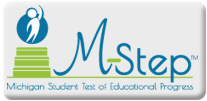

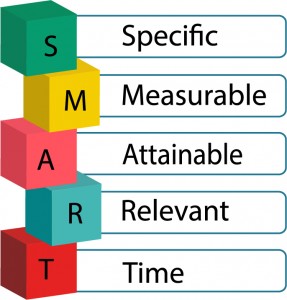 At the end of the year, teachers must officially reflect on their teaching and the impact that it had on kids. Now, this is not to say that teachers don’t reflect throughout the year and observe the impact they have on their students, but it is hard to avoid this question at the end of the year. So, I took out my neatly labeled evaluation folder and looked at my goals. My district requires that I write 3 goals that align with curriculum standards, but also with our district goals. We write these in the SMART (specific, measurable, attainable, realistic, timely) goal format. While, I’m a methodical and organized person, I realized quickly that my projected outcomes turned out very differently than I expected. Additionally, my actual student outcomes produced additional questions I need to consider.
At the end of the year, teachers must officially reflect on their teaching and the impact that it had on kids. Now, this is not to say that teachers don’t reflect throughout the year and observe the impact they have on their students, but it is hard to avoid this question at the end of the year. So, I took out my neatly labeled evaluation folder and looked at my goals. My district requires that I write 3 goals that align with curriculum standards, but also with our district goals. We write these in the SMART (specific, measurable, attainable, realistic, timely) goal format. While, I’m a methodical and organized person, I realized quickly that my projected outcomes turned out very differently than I expected. Additionally, my actual student outcomes produced additional questions I need to consider. Still, this brings up an issue I’m still pondering: I believe that in order to consider work truly digital it must be transformed technology–not able to be created without technology. Clearly, we were already doing this notebook work before technology, so how did this digital version help to accomplish my goal? My students and I quickly realized that styluses leave many things to be desired, and we knew that simply putting this work in an online notebook versus a regular notebook wasn’t enhancing the writing process so much. So, I was on my way to creating a digital reading/writing notebook as my goal stated, but at this point, I had to alter the the attainable part of this goal.
Still, this brings up an issue I’m still pondering: I believe that in order to consider work truly digital it must be transformed technology–not able to be created without technology. Clearly, we were already doing this notebook work before technology, so how did this digital version help to accomplish my goal? My students and I quickly realized that styluses leave many things to be desired, and we knew that simply putting this work in an online notebook versus a regular notebook wasn’t enhancing the writing process so much. So, I was on my way to creating a digital reading/writing notebook as my goal stated, but at this point, I had to alter the the attainable part of this goal. Then, I found myself with a day of digital mishaps that opened the opportunity for students to choose how they organized and crafted their work. I punted quickly with paper copies of the work or the choice for students to create their own page of notes and examples rather than using my digital versions. Students made their choices, and we moved forward with learning for the day. The next day, with all technology working, a student inquired if I had any paper copies like yesterday. This simple question gave me pause. I was embarrassed. I used to be so proud of the choices I provided the students in my classroom, and even more proud when they found their niche and created something that was special to them. I also used to cherish the beauty and variety that students brought to their notebooks – they had my lesson labels and tape-in notes, but they had doodles that added beauty to their pages and colors that shone through the typed notes, as well as messy, but purposeful writing. Now, the beautiful handwriting scripts are gone as are the doodles in the page margins. Their work is still unique in their content and their work is still special to who they are as writers, but it looks very uniform. When I paused, I realized that I also missed my colorful handwritten pages and the little anecdotes from kids that I would add. I got so caught up in using the technology because it was my goal that I forgot about being the teacher that I was.
Then, I found myself with a day of digital mishaps that opened the opportunity for students to choose how they organized and crafted their work. I punted quickly with paper copies of the work or the choice for students to create their own page of notes and examples rather than using my digital versions. Students made their choices, and we moved forward with learning for the day. The next day, with all technology working, a student inquired if I had any paper copies like yesterday. This simple question gave me pause. I was embarrassed. I used to be so proud of the choices I provided the students in my classroom, and even more proud when they found their niche and created something that was special to them. I also used to cherish the beauty and variety that students brought to their notebooks – they had my lesson labels and tape-in notes, but they had doodles that added beauty to their pages and colors that shone through the typed notes, as well as messy, but purposeful writing. Now, the beautiful handwriting scripts are gone as are the doodles in the page margins. Their work is still unique in their content and their work is still special to who they are as writers, but it looks very uniform. When I paused, I realized that I also missed my colorful handwritten pages and the little anecdotes from kids that I would add. I got so caught up in using the technology because it was my goal that I forgot about being the teacher that I was.  As I reflect at the end of the year, I recall what a mentor said to me–that with older students like mine, I could let them choose. She suggested a short research project where kids choose a way to do their writing work as I offer them options and teach about how writing in different genres requires different tools. I know now that my projected outcomes differed from my goal statements because we had to find the right tools for our needs. While I did accomplish my goal – incorporating a digital reading/writing notebook into students’ practice, I am left with my second question: what is a workshop teacher to do without paper notebooks? And I am still thinking about how digital work can enhance the reading/writing workshop in my classroom.
As I reflect at the end of the year, I recall what a mentor said to me–that with older students like mine, I could let them choose. She suggested a short research project where kids choose a way to do their writing work as I offer them options and teach about how writing in different genres requires different tools. I know now that my projected outcomes differed from my goal statements because we had to find the right tools for our needs. While I did accomplish my goal – incorporating a digital reading/writing notebook into students’ practice, I am left with my second question: what is a workshop teacher to do without paper notebooks? And I am still thinking about how digital work can enhance the reading/writing workshop in my classroom. Amy Gurney is an 8th grade Language Arts teacher for Bloomfield Hills School District. She was a facilitator for the release of the
Amy Gurney is an 8th grade Language Arts teacher for Bloomfield Hills School District. She was a facilitator for the release of the  It all started with a ‘stache.
It all started with a ‘stache. Much to Mary Beth’s dismay and the delight of my students and kids at home, my mustache was turning into an iconic cookie duster of the handlebar variety, a style which was selected by a popular vote of the students on my team, and required several youtube tutorials and the purchase of Firehouse mustache wax to perfect. Not to mention, an extended growing season.
Much to Mary Beth’s dismay and the delight of my students and kids at home, my mustache was turning into an iconic cookie duster of the handlebar variety, a style which was selected by a popular vote of the students on my team, and required several youtube tutorials and the purchase of Firehouse mustache wax to perfect. Not to mention, an extended growing season.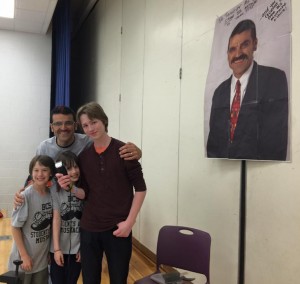
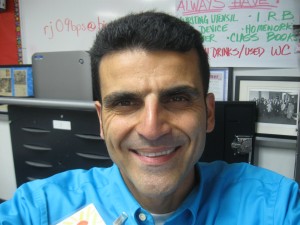 Rick Joseph is a National Board Certified Teacher of 5th and 6th grade students at Birmingham Covington School in Bloomfield Hills, Michigan. He was named the 2015-16 Michigan Teacher of the year. He believes in the power of multi-age education to break down barriers in traditional school settings. Rick advocates for the meaningful use of digital tools on a daily basis to help create meaning and relevance for all learners. He is a member of the Core Leadership Team of the
Rick Joseph is a National Board Certified Teacher of 5th and 6th grade students at Birmingham Covington School in Bloomfield Hills, Michigan. He was named the 2015-16 Michigan Teacher of the year. He believes in the power of multi-age education to break down barriers in traditional school settings. Rick advocates for the meaningful use of digital tools on a daily basis to help create meaning and relevance for all learners. He is a member of the Core Leadership Team of the 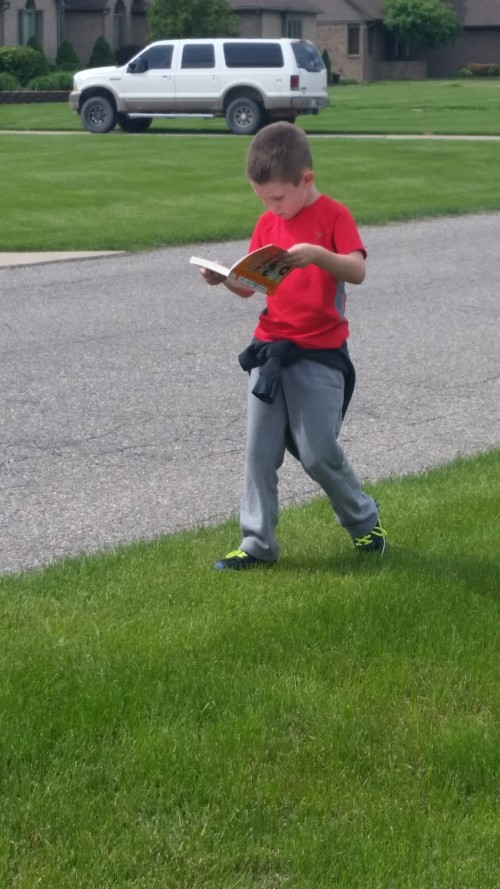
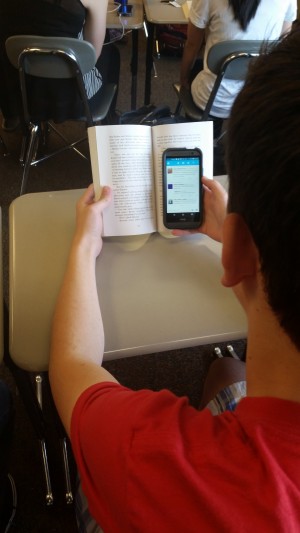

 Hattie Maguire is an English teacher and Content Area Leader at Novi High School. She is spending her fourteenth year in the classroom teaching AP English Language and Composition, English 10, Debate, and Practical Public Speaking. She is a National Board Certified Teacher who earned her BS in English and MA in Curriculum and Teaching from Michigan State University.
Hattie Maguire is an English teacher and Content Area Leader at Novi High School. She is spending her fourteenth year in the classroom teaching AP English Language and Composition, English 10, Debate, and Practical Public Speaking. She is a National Board Certified Teacher who earned her BS in English and MA in Curriculum and Teaching from Michigan State University.